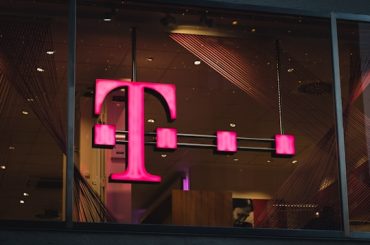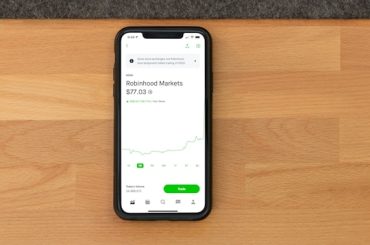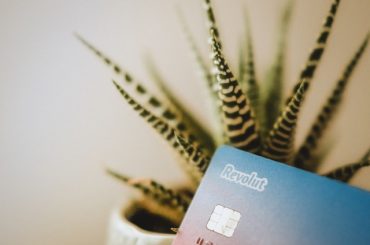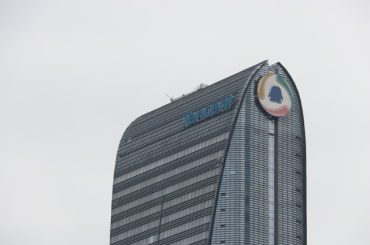Before we dive deep into the SWOT analysis, let’s get the business overview of Bonia. Bonia Corporation Berhad is a luxury fashion retailer and manufacturer based in Malaysia, known for its high-quality leather goods and accessories. Established in 1974 by Chiang Sang Sem, Bonia has become a prominent brand in the fashion industry, particularly in Asia. The company designs, produces, and retails a wide range of products, including handbags, shoes, wallets, and small leather goods, catering to men and women seeking stylish and elegant fashion items.
Core Business Areas:
- Leather Goods and Accessories: Bonia is renowned for its craftsmanship in leather, with products that blend contemporary design with functionality. The brand’s offerings include premium handbags, wallets, belts, and footwear.
- Fashion Apparel: Beyond leather goods, Bonia has expanded into fashion apparel, offering clothing lines that complement its leather product range.
- Branding and Retail: The company has established a strong retail presence with a network of boutiques and counters in major shopping malls across Malaysia, Singapore, and other countries. Bonia has also embraced e-commerce, selling its products through its website and other platforms.
Expansion and Brands:
- Diversification: Besides the Bonia brand, the corporation houses several other brands, including Sembonia and Carlo Rino, which target different market segments and price points. This diversification allows the company to cater to a broader audience.
- International Presence: While its primary market is in Southeast Asia, Bonia has been expanding its international footprint, aiming to build its brand presence in markets outside of Asia.
Bonia’s revenue in FY2023 was RM 424 Mn ($90 Mn).
Here is the SWOT analysis for Bonia
A SWOT analysis is a strategic planning tool used to evaluate the Strengths, Weaknesses, Opportunities, and Threats of a business, project, or individual. It involves identifying the internal and external factors that can affect a venture’s success or failure and analyzing them to develop a strategic plan. In this article, we do a SWOT Analysis of Bonia.
SWOT Analysis: Meaning, Importance, and Examples
Strengths
- Strong Brand Recognition: Bonia has established itself as a reputable brand in the luxury fashion market, mainly known for its high-quality leather goods. This strong brand recognition helps attract and retain customers who seek luxury and quality in their fashion choices.
- Diverse Product Range: The company offers various products, including handbags, shoes, wallets, and accessories, catering to a broad consumer base with varied tastes and preferences. This diversity in product offerings enables Bonia to meet different market demands and consumer needs.
- Strategic Brand Portfolio: Bonia manages a portfolio of brands, including Sembonia and Carlo Rino, each targeting different market segments. This strategic brand diversification allows the company to capture a wider audience, from mid to high-end consumers.
- Established Retail Network: Bonia has built a strong retail presence with numerous boutiques and counters in key shopping malls across its primary markets, ensuring accessibility to its target customers. The physical retail network is complemented by an online presence, catering to the growing e-commerce trend.
- Quality Craftsmanship: The company’s focus on craftsmanship and quality, especially in leather goods, distinguishes its products in the competitive fashion market. This emphasis on quality appeals to consumers looking for durable and stylish fashion items.
- Market Knowledge: With decades of experience in the Asian market, Bonia has deep insights into local consumer behavior, preferences, and trends, which aids in tailoring its products and marketing strategies effectively.
- Innovative Design: Bonia continuously invests in design innovation, ensuring its collections remain fresh, relevant, and in line with current fashion trends. This commitment to innovation helps in maintaining consumer interest and brand loyalty.
- Sustainability Initiatives: The company’s growing focus on sustainability and eco-friendly practices resonates with the increasing consumer demand for responsible fashion, potentially enhancing its brand image and appeal to environmentally conscious consumers.
Weaknesses
- Regional Concentration: Bonia’s primary market focus is in Southeast Asia, particularly Malaysia and Singapore. This regional concentration might limit its growth potential and expose the company to economic and political risks specific to this region.
- Competition from Global Brands: The luxury fashion market is highly competitive, with numerous global brands vying for consumer attention. Bonia faces competing against these brands, often with more significant marketing budgets and global recognition.
- Changing Consumer Preferences: The fast-paced nature of the fashion industry requires constant adaptation to changing consumer trends. Bonia may face challenges in keeping up with these rapid changes, especially with the rise of fast fashion and changing consumer values towards sustainability.
- Reliance on Physical Retail: Although Bonia has an online presence, its business model traditionally relies heavily on physical retail outlets. The shift in consumer shopping behavior towards online platforms could pose a challenge if the company does not sufficiently adapt its digital strategy.
- Product Differentiation: Creating a distinct brand identity and product differentiation can be challenging in a crowded luxury market. Bonia must continuously innovate to ensure its products stand out in design, quality, and appeal.
- Economic Sensitivity: Luxury goods are often considered discretionary spending, making Bonia’s sales susceptible to economic downturns. In challenging economic times, consumers may reduce spending on luxury items, affecting the company’s revenue.
- Supply Chain Risks: As with many fashion retailers, Bonia’s supply chain could be vulnerable to disruptions, whether from geopolitical tensions, global pandemics, or other unforeseen events. Such disruptions can impact product availability and delivery timelines.
- Digital Engagement: While Bonia has made strides in establishing an online presence, further enhancing its digital engagement and e-commerce capabilities is crucial to meet the growing consumer preference for online shopping and digital interaction.
Opportunities
- Global Market Expansion: Expanding beyond its primary Southeast Asian markets into other regions can provide Bonia with new customer bases and revenue streams. Emerging markets with growing middle and upper-class populations, such as Africa and South America, could be desirable.
- E-Commerce Growth: The global shift towards online shopping presents a significant opportunity for Bonia to enhance its digital platforms and e-commerce capabilities, reaching a wider audience and providing a more convenient shopping experience.
- Sustainable and Ethical Fashion: Increasing consumer awareness and demand for sustainable and ethically produced fashion items offers Bonia an opportunity to develop further and market its sustainability initiatives, potentially attracting a broader, more environmentally conscious customer base.
- Product Diversification: Introducing new product lines or expanding into related categories such as eyewear, fragrances, or tech accessories could help Bonia capture a larger share of the luxury market and cater to evolving consumer preferences.
- Collaborations and Partnerships: Collaborating with designers, celebrities, or other brands can create buzz and attract new customers. Limited edition collections or partnerships can also rejuvenate the brand and introduce it to different demographics.
- Enhanced Customer Experience: Investing in technology to improve the customer experience online and in physical stores can enhance brand loyalty and customer satisfaction. This includes personalization, augmented reality (AR) for virtual try-ons, and improved customer service.
- Market Research and Consumer Insights: Leveraging data analytics and consumer insights can help Bonia better understand its customers’ preferences and behaviors, leading to more targeted and effective product development and marketing strategies.
- Lifestyle Branding: Positioning Bonia as a lifestyle brand that goes beyond fashion and accessories can open up new avenues for brand extension, such as Bonia-themed cafes or hotels, further enhancing the brand’s footprint and customer engagement.
Threats
- Intense Competition: The luxury fashion sector is highly competitive, with numerous established and emerging brands vying for market share. International luxury brands, in particular, pose a significant threat due to their strong brand recognition and global presence.
- Economic Fluctuations: Economic downturns and fluctuations can significantly impact consumer spending on luxury goods, as these items are often considered non-essential. Economic instability in Bonia’s key markets could reduce sales and profits.
- Changing Consumer Preferences: The fashion industry is subject to rapidly changing trends and consumer preferences. A shift towards fast fashion, casual wear, or sustainable products could reduce demand for traditional luxury items, affecting Bonia’s sales.
- Counterfeit Products: Counterfeit goods can undermine the brand’s reputation and lead to lost sales. Counterfeiters often target Luxury brands like Bonia, posing a continuous threat to their market position and brand integrity.
- Supply Chain Disruptions: Global events such as pandemics, natural disasters, or geopolitical tensions can disrupt supply chains, affecting the availability of raw materials and the production of goods. Such disruptions could lead to inventory shortages and delivery delays for Bonia.
- Regulatory Changes: Changes in trade policies, tariffs, and regulations, especially in international markets, can pose challenges to Bonia’s operations. Compliance with diverse and changing regulations can increase operational costs and complexity.
- Digital Security Threats: As Bonia expands its online presence, the threat of cyber-attacks and data breaches grows. Such incidents can compromise customer data and damage the brand’s reputation and consumer trust.
- Sustainability and Ethical Concerns: Increasing consumer awareness around sustainability and ethical production practices can pose a threat if Bonia fails to meet these expectations. Consumers are increasingly holding brands accountable for their environmental impact and labor practices.









